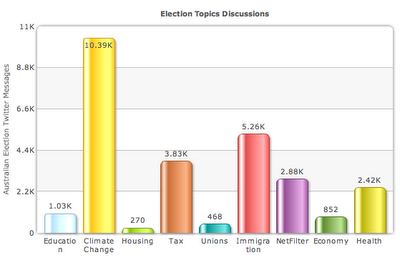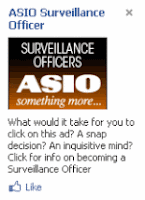This followed the Skype scandal in April this year where several male Defense Force cadets conspired to broadcast a female cadet having consensual sex without her knowledge to half a dozen other (male) cadets. The female cadet reportedly went to the media after being told that there was no possibility of police action.
On some exploration I found a reason why George Patterson Y&R was selected - their long association via the Defence Force recruitment advertising contract. A trusted working relationship and a 'known quantity' would have decreased the review's risks from Defence's perspective. The existing contract may even have simplified and expedited the procurement process whilst remaining within government guidelines.
However I still found this choice surprising. In my view traditional advertising agencies in Australia haven't demonstrated a sound understanding of how to use social media effectively, particularly for government purposes.
I'm not the only one who thinks this. Laurel Papworth, a social media specialist, also had doubts about the choice, summed up in her post, Australia Defence Force ADF and social media. This included comments made to Crikey, reported in the article, ‘No conflict’ over Defence Force social media probe.
My concerns about the choice were heightened by the coverage this weekend over the personal comments by senior George Patterson Y&R staff,
Alongside this, there are a growing number of people within Australian government with a sound understanding and experience of using social media effectively for their agencies. This is evidenced by the rising number of social media policies and channels in use by many agencies. There's even a few staff in Defence who are very experienced social media practitioners.
Externally there's a growing number of specialist digital agencies and social media specialists in Australia who are able to provide effective risk assessment, support and training.
There is also quite a lot of experience in Departments similar to Defence in other countries, such as the US Defense forces.
The US has provided a great deal of effective and well-structured guidance for US sailors, soldiers and air force personnel, from the Navy Command Social Media Handbook, Social Media and the Air Force guidebook (2nd Edition) and the 2011 US Army Social Media Handbook (a follow-up from their 2010 handbook).
There's also the fantastic Web Posting Response Assessment flowchart from the USAF and even the Marines have embraced social media use.
They've even indexed their official social media channels to make them easier to discover. US's Defense forces have social media directories, the US Navy's social media directory, the US Army's directory and a similar directory for the US Air Force.
The social media report is due in July - I look forward to seeing it released publicly.
I hope that George Patterson Y&R are able to provide useful findings and actionable recommendations - and that they particularly consider the social media expertise and experience of the groups above.




